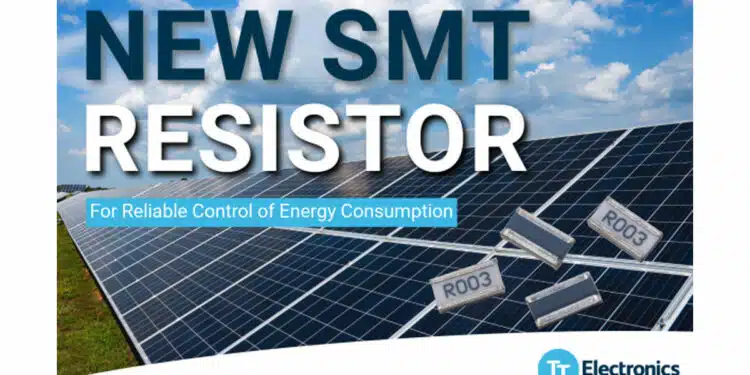TT Electronics, a global provider of engineered electronics for performance critical applications, has announced the release of the LRF4W SMT shunt resistors.
The new SMT shunt resistors offer fault tolerant current sensing in the tens of amps range for automotive and industrial applications.
The LRF4W is an AEC-Q200 qualified high power, low value SMT resistor and is ideally suited to current sensing circuits in battery management, motor control and power conversion products.
Using low resistivity thick-film materials and an inverse format 1225 footprint, this part offers values down to 3mΩ and is a higher-rated complement to the existing LRF3W.
Building on TT’s expertise in current sense resistors, this product offers class-leading power density for an alumina-based product, with values from 3 to 100mΩ at 1% tolerance with TCRs down to 100ppm/°C.
“The thick-film SMT shunt LRF4W is the latest addition to TT’s growing portfolio of current sense resistors with AEC-Q200 approval.” Said Stephen Oxley, Business Development Engineer at TT Electronics. “It helps our customers to achieve accurate and surge-proof current measurement in PCB assemblies, supporting the development of products which feature reliable control of energy consumption.”
Capable of withstanding a 100% over-current condition for 5s and with good fast surge performance, this product enables a high degree of fault tolerance to be built in at component level. The high degree of surge tolerance and the high-power density of the LRF4W enhances the reliability and the saves PCB area for high load designs.
Features
- 4W in 1225 package
- Resistance range from 3 to 100mΩ
- Tolerances to ±1%
- AEC-Q200 qualified
- Low thermal impedance
- Wide terminations to enhance robustness
Applications
- Current sensing in automotive and industrial applications
- Batery management
- Motor control
- Power conversion
































